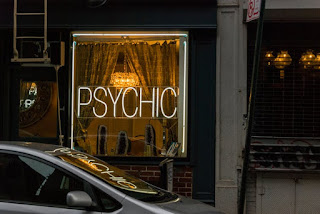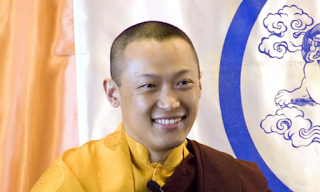New York Times
Sharon Otterman and Sean Piccoli
May 9, 2019
Noah Abdullah hasn’t immunized his 4-year-old son, Michael, saying that he’d read vaccines might be “no good” and that he’d “rather do natural things” to strengthen his child’s immune system.
“I need to see more information before I start shooting him up with stuff,” Mr. Abdullah said.
Donna Mosley said her 3-year-old grandson also did not have his vaccinations, though she wishes he did. His mother is afraid the shots could cause autism, she said, and his father’s Muslim beliefs have made him “totally against it.”
The two boys attend Sister Clara Muhammad Elementary School in Harlem, a small school where most children had a religious exemption to immunization in the last school year, according to city health department data.
As the measles outbreak deepens in New York City, health authorities have been focusing on schools affiliated with ultra-Orthodox Judaism, because those are the only city schools within which measles transmission has occurred so far. But immunization data, reported annually by every school to the state, suggests that reluctance to vaccinate in New York is much more widespread.
The majority of the dozens of New York City schools that had less than 90 percent of their children vaccinated for measles in the last school year were not ultra-Orthodox Jewish, according to the data, which is reported by the schools themselves.
Several were Muslim schools, while others were Bible-centered Christian academies. Some were schools that hew to nontraditional philosophies, including the Waldorf education movement, which tends to attract parents who favor alternative medical practices. Some served autistic or special-needs children.
Because the schools’ immunization data is self-reported in mid-December of each school year, it offers only a snapshot that can change as students are vaccinated. But the data can serve as a guide for finding pockets of vaccine reluctance that was borne out in interviews with parents.
Vaccines have been proven to be safe and effective against the spread of disease, and there is no evidence that they cause autism.
For now, the ban on unvaccinated children attending school in New York City applies only to children who attend Orthodox Jewish schools in the four most affected ZIP codes in and around Williamsburg, Brooklyn, the center of the outbreak.
There were 31 new cases in Williamsburg last week, bringing the total measles cases in the city since September to 466.
If the outbreak reaches beyond the Orthodox Jewish community in Brooklyn, as public health experts fear, other schools with low vaccination rates could also become hotbeds for the disease.
In a worrying sign, two cases of measles reported this week occurred in students with religious exemptions who attend public schools in Sunset Park, Brooklyn.
Dr. Oxiris Barbot, the city health commissioner, said Tuesday that both of the children had spent time in a part of Brooklyn with measles activity, and were not in school while they were contagious. She urged people to remain calm and get vaccinated.
Daniel Salmon, the director of the Johns Hopkins Institute for Vaccine Safety, said that the clusters of parents who are refusing vaccines, in New York and elsewhere, were making him worry that the measles outbreak could turn into a measles epidemic.
“The story with measles for the past 20 years is that it starts among refusers, it spreads predominately among refusers, and along the way it picks off other kids,” he said. “Up until now, we have been able to put a stop to it. But I’m nervous. I’m afraid what happened in Europe is going to happen in the U.S.”
Sister Clara Muhammad in Harlem is part of an Islamic school system affiliated with Warith Deen Mohammed, who transformed the original Nation of Islam movement into an African-American-centered Sunni Muslim community in the 1970s.
The tiny school is on the upper two floors of the Malcolm Shabazz Mosque in Harlem, on a site where Malcolm X preached. Eleven students are enrolled this year, state data showed, and last year, two of the three enrolled students had religious exemptions.
Mr. Abdullah, 38, the parent at the school who is reluctant to immunize his 4-year-old son, Michael, said he was concerned about the measles outbreak and would seek out more advice.
“I was going to talk to his doctor at the next visit to find out what’s going on,” he said.
The modern-day Nation of Islam movement has been outspoken about its anti-vaccine beliefs, but less is known about patterns of vaccine refusal in Sister Clara Muhammad schools around the country. The school’s administration did not respond to a request for comment.
At Charles H. Churn Christian Academy, which operates out of a storefront in Brownsville, Brooklyn, 34 percent of its students had religious exemptions from vaccination in 2017-18, the state data showed. The school enrolls about 100 children from kindergarten to 12th grade.
The principal, Linda Hunt, stood in the doorway of the school the other day, with a group of young children seated at a small table behind her. She said both Muslim and Christian families had claimed religious exemptions.
“I believe everybody should be immunized, but you can’t make people if that’s their belief,” Ms. Hunt said.
The New York City health department said that, in general, it did not have the authority to challenge religious exemptions, which are legal under state law. An effort to curtail them is now stalled in Albany.
Some schools that reported very low vaccination rates in 2017-18 have now improved them, showing that city efforts to audit schools and promote enforcement can have an impact, the city health department said.
St. Brigid Catholic Academy in Bushwick had the lowest vaccination rate in Brooklyn in 2017-18, with only 51 percent of its students completely immunized.
Now, said the Diocese of Brooklyn, which oversees the school, 96.5 percent of the students at the school are fully vaccinated.
The database includes vaccination rates of 5,557 public and private schools in New York, including 715 private schools in New York City. Immunization data for the city’s public schools is reported directly to the city, which then sends it, grouped by borough, to the state.
On Monday afternoon at the New Amsterdam School, a small Waldorf school on Avenue B in the East Village, parents and children filed out of a gated walkway at dismissal past a hand-lettered chalkboard advertising an open house for fall enrollment.
Nationwide, schools associated with the Waldorf education movement have some of the lowest vaccination rates, public health experts said. While the movement does not take a formal position on vaccination, and has no religious affiliation, its philosophy tends to attract bohemian families.
A handful of parents outside New Amsterdam said they were surprised to learn the school’s religious exemption rate for immunizations was 35 percent in the 2017-18 school year — higher than they thought it would be.
Roughly 40 students were enrolled that year.
“It might be idealistic, but I guess we respect each other as a community enough to let people make their own choices,” said Amy Joyce, who has two children at the school, both fully vaccinated.
Two parents who said they had not vaccinated their children declined to give their names, citing privacy concerns.
One, a mother of a first grader, said that her choice had never been an issue at New Amsterdam.
“There is more of an open-mindedness about it, or just acceptance,” she said.
A father of two girls at the school said, “I’m not totally anti-vaccine, but I think giving it to kids at such young age when they haven’t really developed a strong enough microbiome on their own is detrimental to their health.”
He said that after noticing “significant personality changes” in his eldest daughter after her early vaccines, he stopped vaccinating her and did not vaccinate his younger daughter.
The Brooklyn Waldorf School, which enrolls about 200 children, is in the Bedford-Stuyvesant area of Brooklyn, near the measles outbreak in Williamsburg.
Twenty-four percent of the children had religious exemptions from immunizations last year. Last Friday, some parents expressed concern about the anti-vaccination views of fellow parents.
“It makes me angry that people are not following the doctor’s advice — and society’s,” said Maria Jarnit-Bjergsoe, 39, who is pregnant. She said that both of her sons at Waldorf were vaccinated. “It’s just putting other people in danger unnecessarily.”
Denese Giordano, the Brooklyn Waldorf School’s administrative director, said that if there were a case of measles at the school, “we would close the school that day and work in compliance with the Department of Health and any other regulatory agencies.”
For now, children with vaccine exemptions are permitted to attend.
“It’s not a matter of latitude,” Ms. Giordano said. “We follow health department guidelines.”
Sharon Otterman has been a reporter at The Times since 2008, primarily covering education and religion for Metro. She won a Polk Award for Justice Reporting in 2013 for her role in exposing a pattern of wrongful convictions in Brooklyn. @sharonNYT
A version of this article appears in print on May 10, 2019, on Page A1 of the New York edition with the headline: Low-Vaccination Clusters Add to Measles Fears
https://www.nytimes.com/2019/05/09/nyregion/measles-outbreak-ny-schools.html 







